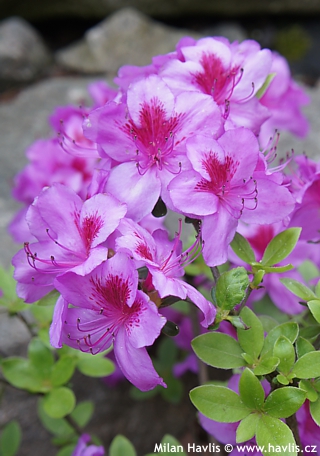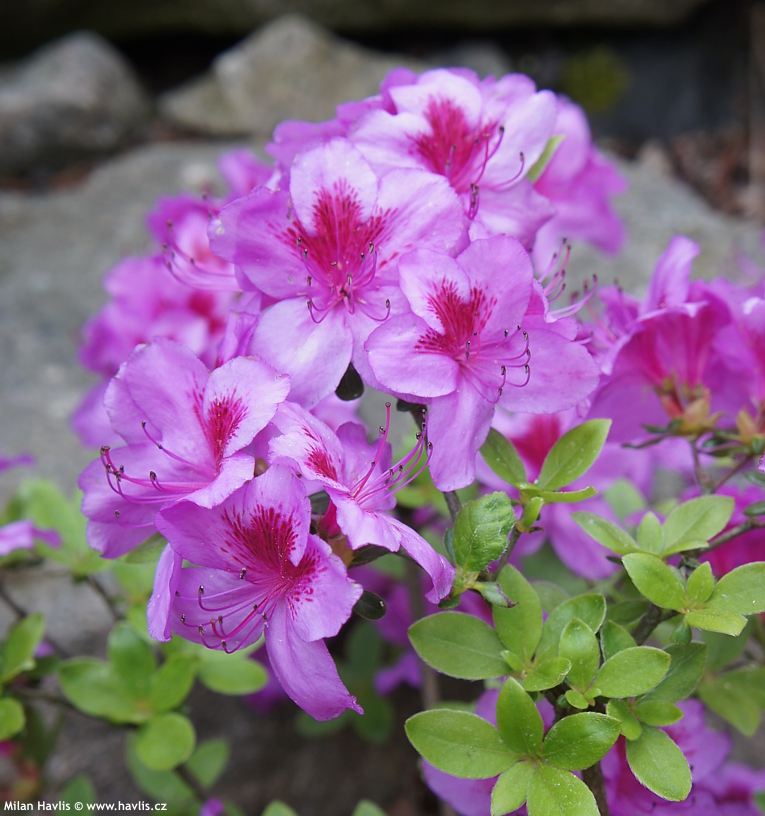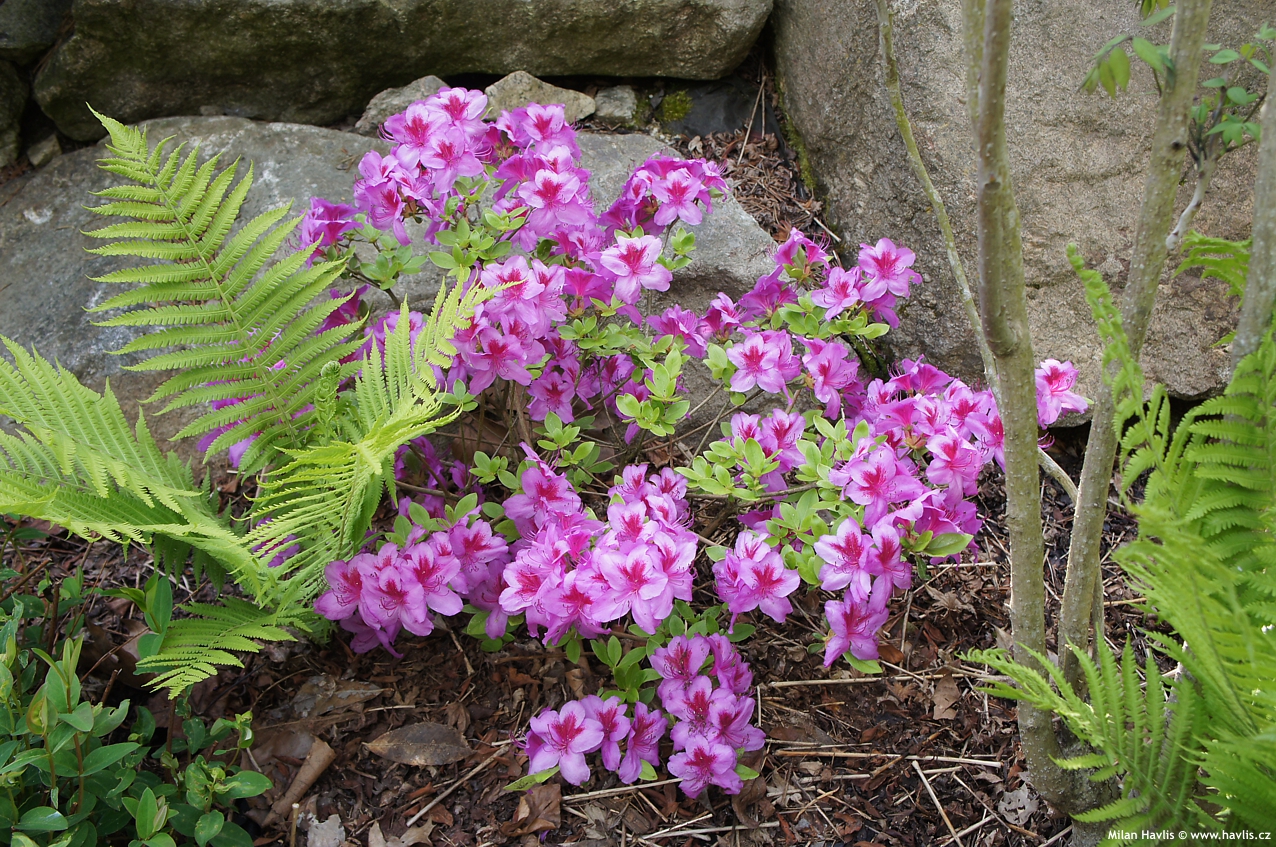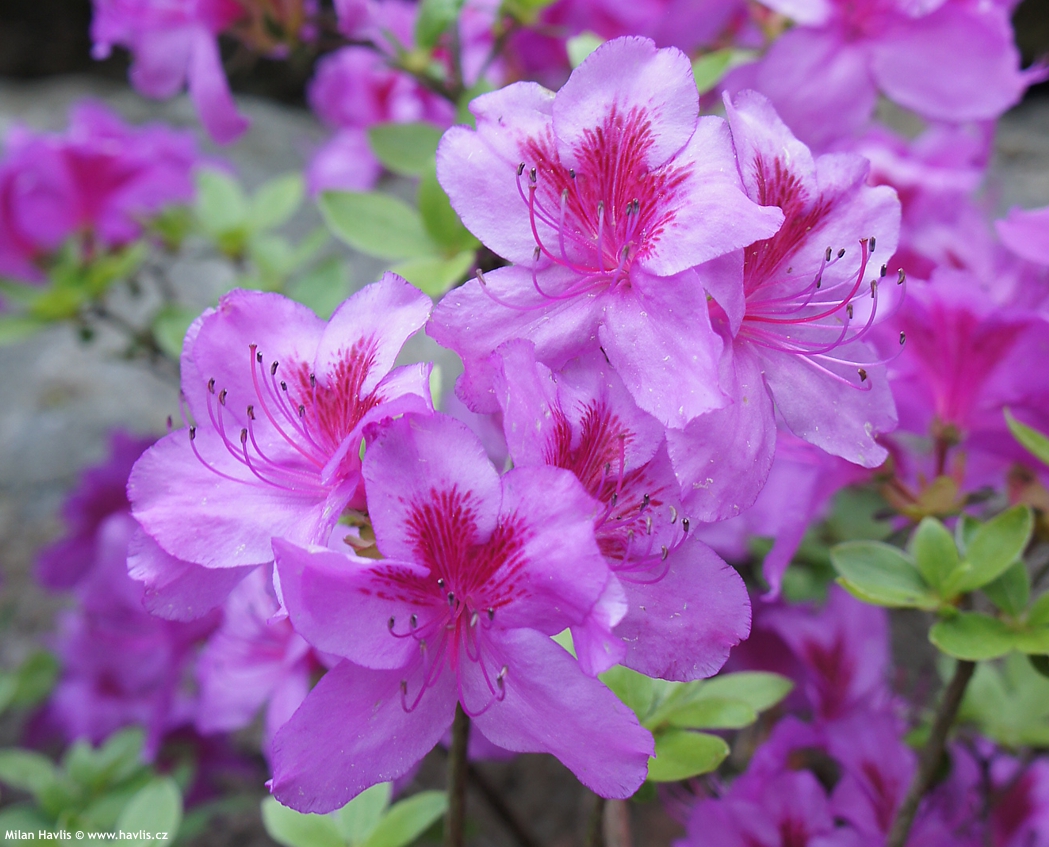Azalea japonica 'PEPPINA'® Japanese azalea
size/type
low or groundcovering,low or groundcovering
usual height
0,3-0,6m
usual width
0,4-1m
leaves
semi-deciduous broadleaf
colour of leaves
flowers
showy
colour of flowers
blooming time
May-June
location
semi-shade / partial sun
USDA zone (lowest)
5 (down to -29°C)
winter protection
for zone 5+6

for zone 7

categorized
Azalea
Japanese azaleas are very popular features of our gardens. In their home climate they grow to relatively substantial shrubs, as opposed to limited sizes in our continental, dry climate. They are very floriferous, maintenance-free shrubs that usually bloom from mid to end spring.Description of the plant:
If you like Japanese azaleas try this one. Peppina® is a lovely variety with extremely large flowers, up to 5.5 cm wide which is a size of a small rhododendron flower. Another feature similar to rhododendrons is the conspicuous blotch, which is deep purple in a light purple-violet coloured flower. They come out from the last decade of May and continue until early June. It grows very dense and slowly. In 10 years it may be 25 cm tall and only 60 cm wide. Leaves are small and mid green. A great portion of them fall down before winter so that the plant can make new ones in spring. Bred by H.Hachmann in 2001.Japanese azaleas can be clipped to shapes in early June. If so, do not use fertilizers enhancing growth rate. The size of new branches would get out hand and spoil the shape you are going to achieve. They need light, permeable soil that is acid, constantly moist (keep azaleas mulched at all times) and moderately fertile. Use fertilizers for rhododendrons and azaleas, or ericaceous plants. The best soil mix is 1/3 of peat, 1/3 of leaf-mould or lime-free compost, and 1/3 of soil from the hole where you are going to plant it. Azaleas have shallow roots, so do not plant them too deep. They are fully hardy to about -27°C (USDA zone 5).
Last update 29-12-2008.
QUICK PRICE OVERVIEW
CURRENTLY SOLD OUT
















